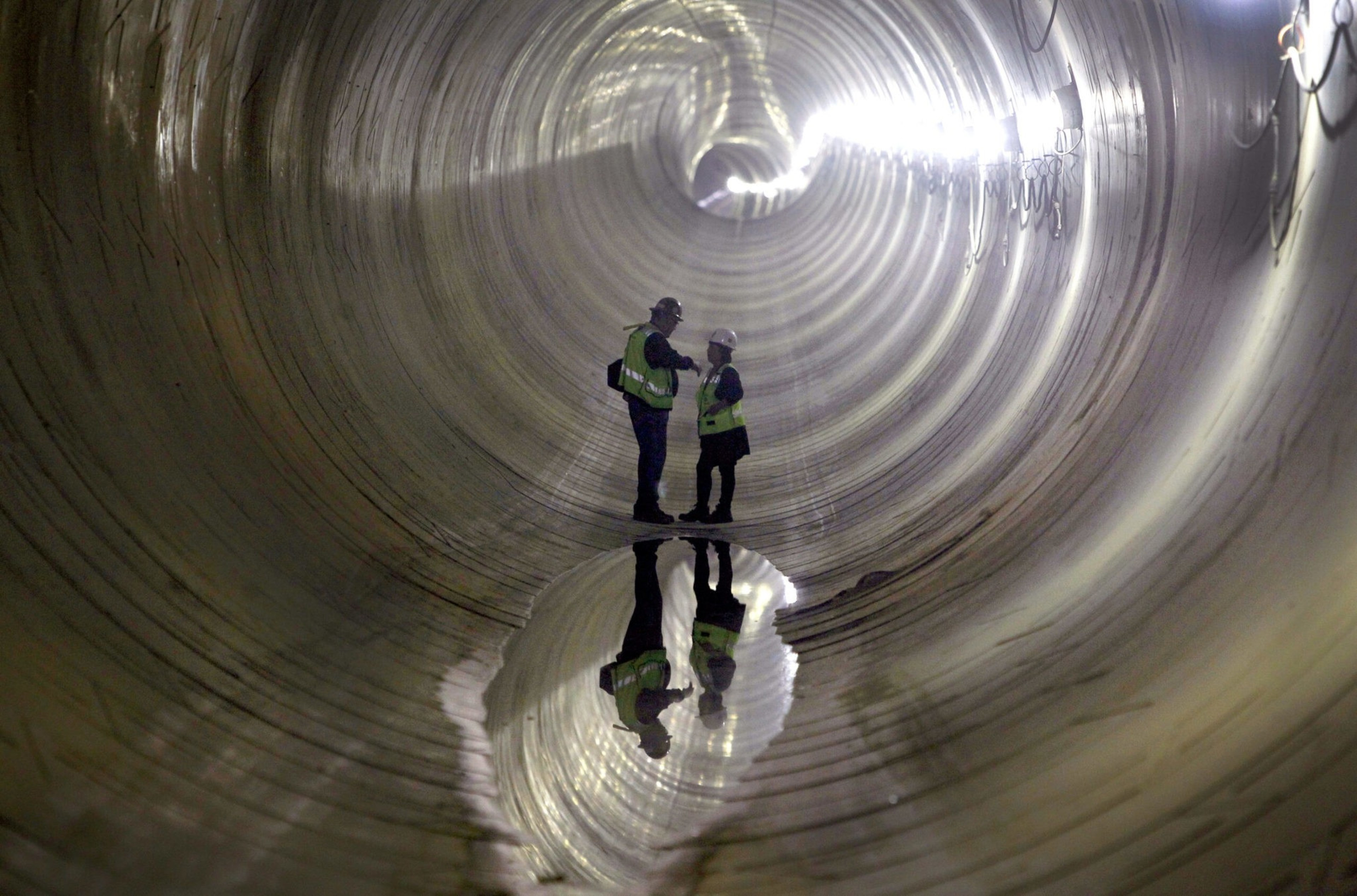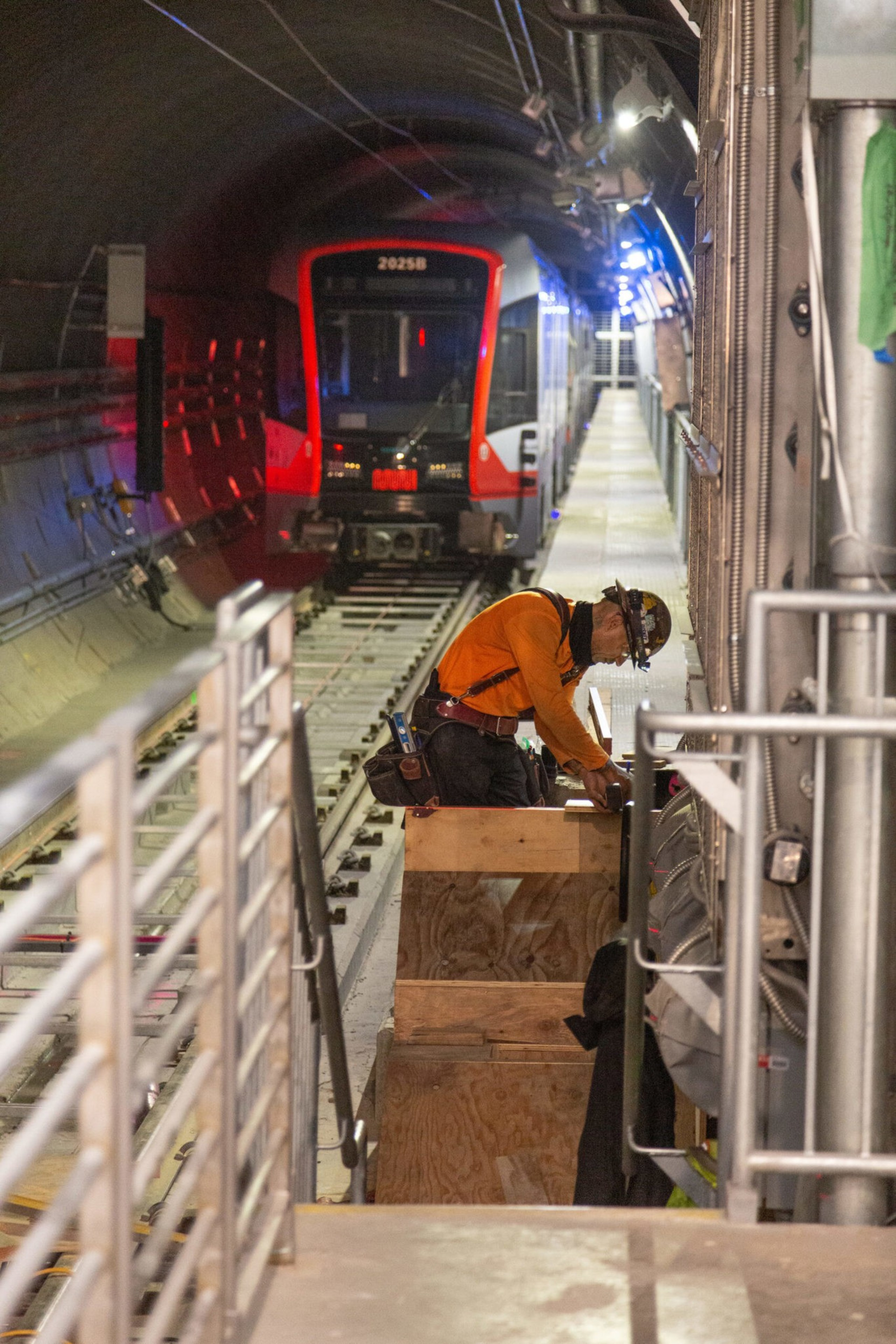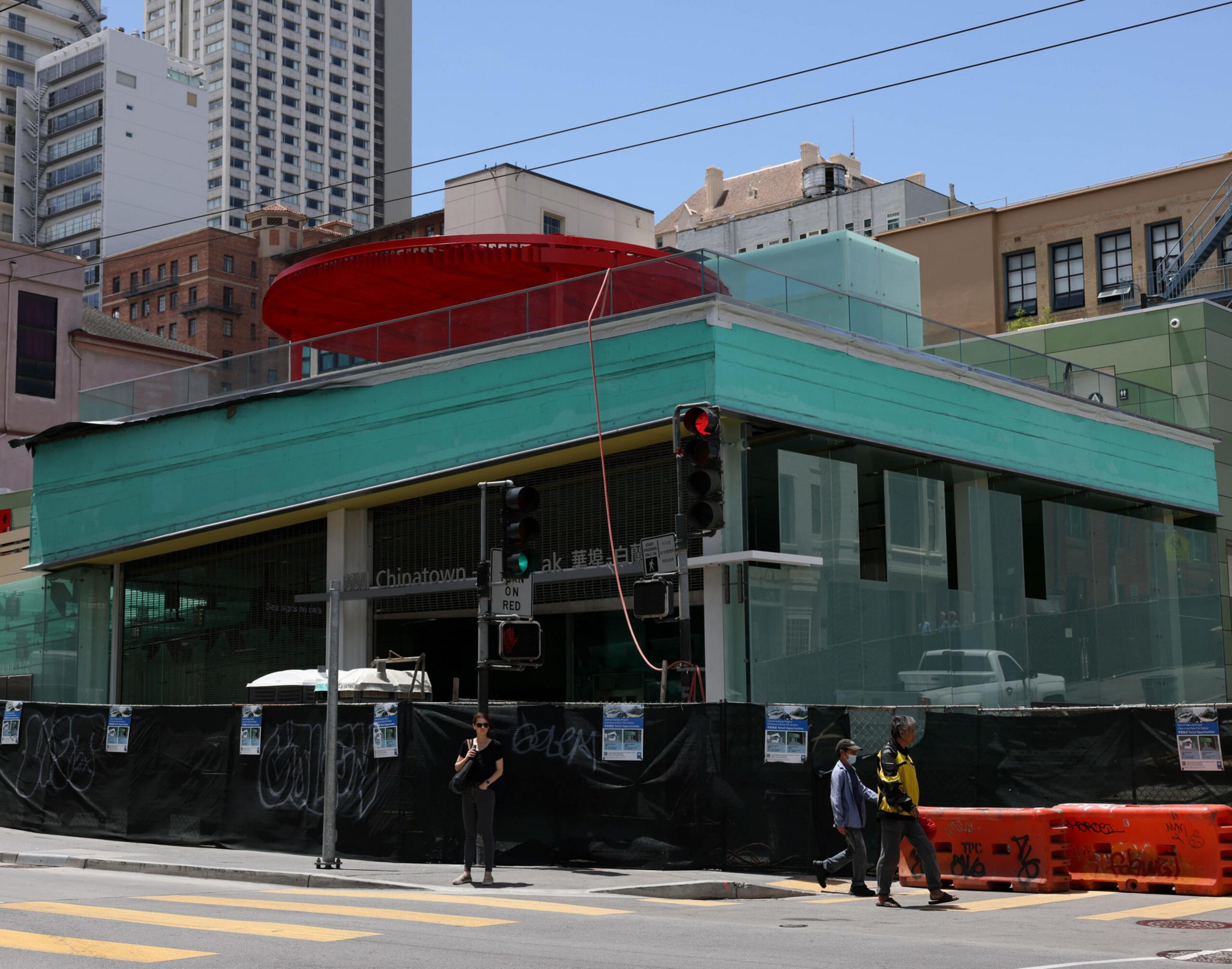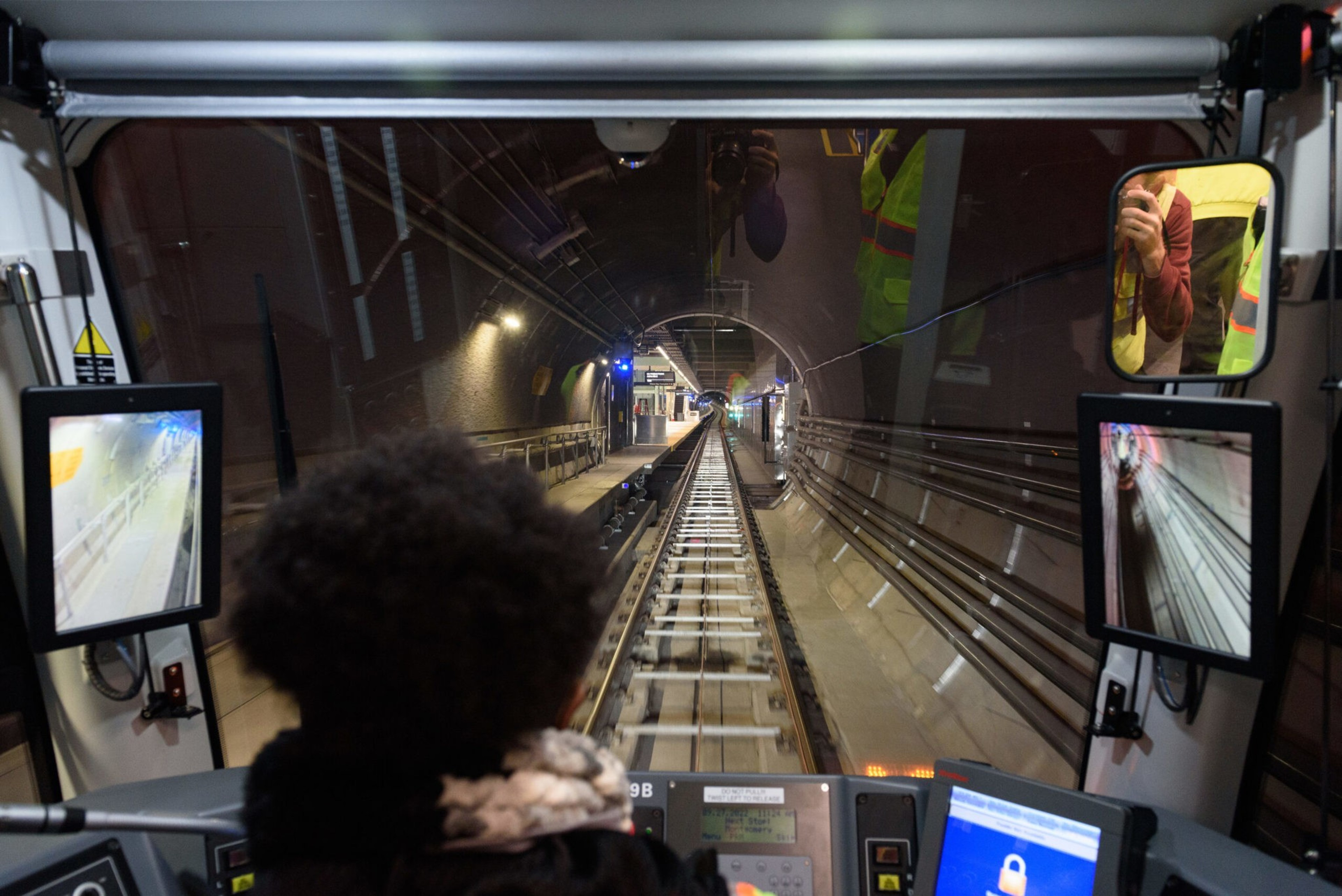The decades-in-the-making Central Subway will start limited service this weekend, allowing passengers to ferry between its four stops for free while giving the San Francisco Municipal Transportation Agency time to work out any kinks in operations.
Deemed a boondoggle by detractors from the jump and even labeled the “Central Circus” (opens in new tab) by one of its staunch proponents, the mega-project is four years late and $375 million—and counting—over budget. An independent watchdog working on behalf of the federal government had so many concerns it called the Nov. 19 opening date “optimistic” in a September report.
The Central Subway was initially a very promising project on paper, serving an incredibly dense area with lots of jobs and tourist destinations along with connecting riders to Caltrain and BART. The project survived a fire (opens in new tab), persistent water leaks (opens in new tab), lawsuits, a contractor (opens in new tab) pinched for bid-rigging and—so far—a pandemic, among other trials.

But transportation patterns have drastically changed since Covid hit the city, renewing questions about the usefulness of the new subway, which extends from SoMa through Downtown to Chinatown. The rate of the area’s recovery has been excruciatingly slow, with SF ranking dead last compared to all major American cities. (opens in new tab)
Compounding the challenges the Central Subway faces are the service cuts looming over the city’s transit agency, leaving very little room for error. The agency needs to restore its ridership across all lines to increase its revenue before federal funds run dry—and the long-awaited Central Subway ups the ante.

Getting There
On Saturday morning, the SFMTA will welcome the public for special weekend service hours running from 8 a.m. to midnight. The purpose of the soft opening is to allow the agency’s staff to complete work and practice with fewer passengers before integrating the system with the T-Third Line on Jan. 7.
The road to Saturday has been a long one, and the SFMTA still has quite a lot of work on the project ahead of it.
The subway, which is almost two miles long and punctuated by four stations, is designed to connect the city’s eastern neighborhoods to Union Square and Chinatown. The line will fulfill campaign promises made as far back as the early ’90s and realize a century-old dream of an underground connection crossing Market Street.
Rose Pak, the late Chinatown community leader, persuaded elected officials to build the subway to replace the Loma Prieta Earthquake-damaged Embarcadero Freeway as a means of maintaining the neighborhood’s connectivity to the rest of the city. Mayor Willie Brown garnered funds to get the work underway.

Preliminary work started in 2010, and the bulk of its funding was secured in 2012, in no small part by Speaker Nancy Pelosi. The price tag: $1.6 billion.
There were compromises. Station platforms were shortened to save construction time and money at the cost of capacity. Airport-style moving sidewalks to better connect Union Square and Powell Street stations were eliminated.
Total costs and completion dates have repeatedly shifted. At one point, there were 1,300 pending contract modifications jamming up the project. This year, water leaks and a fire in a power room caused more problems, delaying its planned June 2022 opening.
Costs and Concerns
Funded by a mix of federal, state and local sources, the subway’s current cost forecast is $1.95 billion—$375 million more than the original estimate of $1.578 billion.
In its September report, the federal monitor highlighted the likelihood of at least $42 million more in cost increases, pushing up the total cost of the project. Unresolved contractor claims related to Covid pose considerable potential additional costs.
The SFMTA did not answer questions about the potential cost increases or Covid claims.
Gerry Cauthen, a transit advocate who worked on building the Muni and BART subways, has been a fierce critic of the Central Subway over the years.
“They were showing us a big moneymaker, which of course turned out not to be at all,” Cauthen said. “I’ll be surprised if they get 20,000 riders a day.”

Cauthen’s waiting to see how it operates in January. “The main traffic is going to be between the Caltrain and Union Square—that’s going to be it,” he added.
Howard Wong, a retired architect with the transit advocacy group Save Muni, has criticized the project, even spearheading a lawsuit against the city over the placement of the Union Square station.
During high-volume days, when there are events at the Chase Center, the Union Square station platform will be crowded and the two-car trains will be filled quickly, he said.
Light rail vehicle operators with the Transport Workers Union 250A have their own list of concerns, ranging from water leaks in the subway and signal issues on the route’s above-ground portion that raise traffic safety concerns.
During testing, train operators encountered speeding motorists exiting the freeway onto Fourth Street and motorists going eastbound on Bryant Street making illegal turns, said Roger Marenco, the union’s president.

“Illegal left and right turns on all intersections are in conflict with train movements, and this is an accident waiting to happen,” he said.
The agency denied that’s the case: “There’s no unresolved risk items related to entering or exiting the portal,” said an SFMTA spokesperson.
Bumpy Road Ahead
The Central Subway won’t be complete on Saturday.
Door hardware installation and information signs in several locations are still being worked on, according to the building department.
However, the transit agency already has its eye on bigger plans. SFMTA has started studying a Central Subway third phase extension (opens in new tab) that could take it as far as Fisherman’s Wharf. Connecting Caltrain in the SoMa to Downtown’s Salesforce Transit Center is next up.
To make those dreams a reality, the multiple government agencies required to get such projects done will undoubtedly face a chorus of critics.

Wong was deeply skeptical of the agency’s justifications for the Central Subway, saying that politics interfered with what should have been a sober analysis of the subway’s costs and benefits.
“All the justifications for the project were not accurate. In reality, much of the data show that the benefits are low for the amount of money spent,” Wong said.
But it’s clear that the city is not unique when it comes to these issues.
“There have been many infrastructure projects not only in San Francisco but throughout the country, where the political objective, just getting money no matter what it’s for, becomes a paramount issue, even if the project itself may not be offering high benefits,” Wong said.
Time and cost estimates are incredibly inaccurate from planning to opening for public transit projects, said Jacob Wasserman, a researcher at UCLA’s Institute of Transportation Studies.
“Ridership projections are often much higher than ends up being the case, costs overrun by orders of magnitude,” he said.
American rail projects are famous for costing more per mile (opens in new tab) than European and Asian projects.
And despite all the expenditures, the city’s public transit ridership hasn’t meaningfully increased.
“The total share of transit ridership for all trips has remained relatively unchanged, lingering around 25% of all trips,” Wong said. “50% of trips are still by motorized vehicle.”
